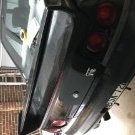R33 Fuel Pump Wiring , Better Feed Retaining Fpcm ?
Announcements
-
Similar Content
-
Latest Posts
-
The screw is for idle (pilot circuit) mixture adjustment. Else, I'm confused ~ the diagram shows 2 carby ports, and the intake manifold port, but you're suggesting the "2nd port on the back of the carb that isn’t mentioned in the diagrams" ...yet, both carby ports are shown...que?... ...in any event, that port should be connected, but if not (like it is now), it's unlikely to cause a backfire out the carby (it would introduce false air and give you a fast/lean idle) ...sounds more like timing issues/spark plug wire routing responsible for the backfiring.
-
That's fair, I can see both points. I get enthusiastic when I see the FS section has a new post and want to see what interesting thing someone is selling. Then I get deflated it's a bump of a 10 year old post. Ha ha
-
Couple of litres of moonshine from his southern cousins would do it...
-
Brakes definitely won't make him faster. They only slow you down. 😛
-
cool car to be working on, but I think you need some really old school help on this one
-





Recommended Posts
Create an account or sign in to comment
You need to be a member in order to leave a comment
Create an account
Sign up for a new account in our community. It's easy!
Register a new accountSign in
Already have an account? Sign in here.
Sign In Now